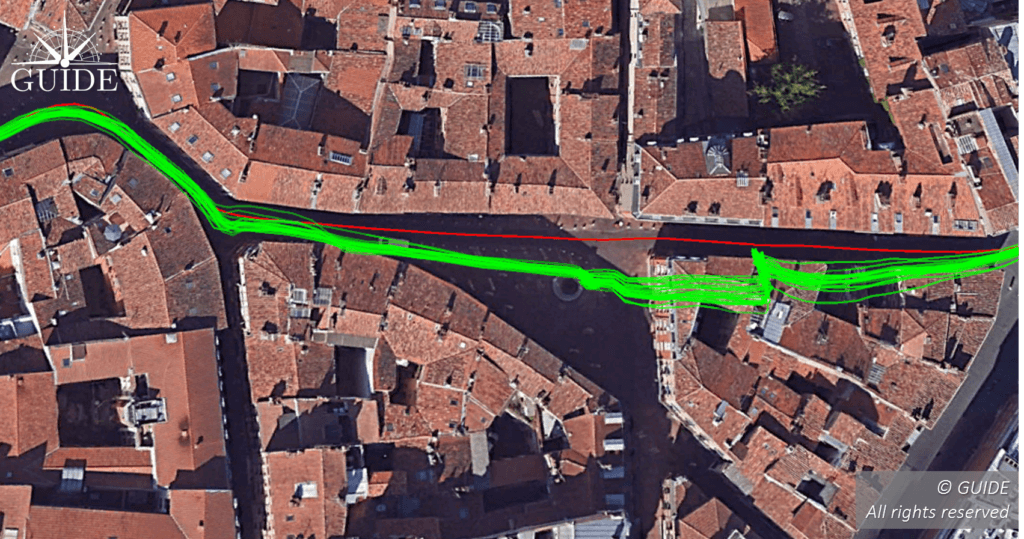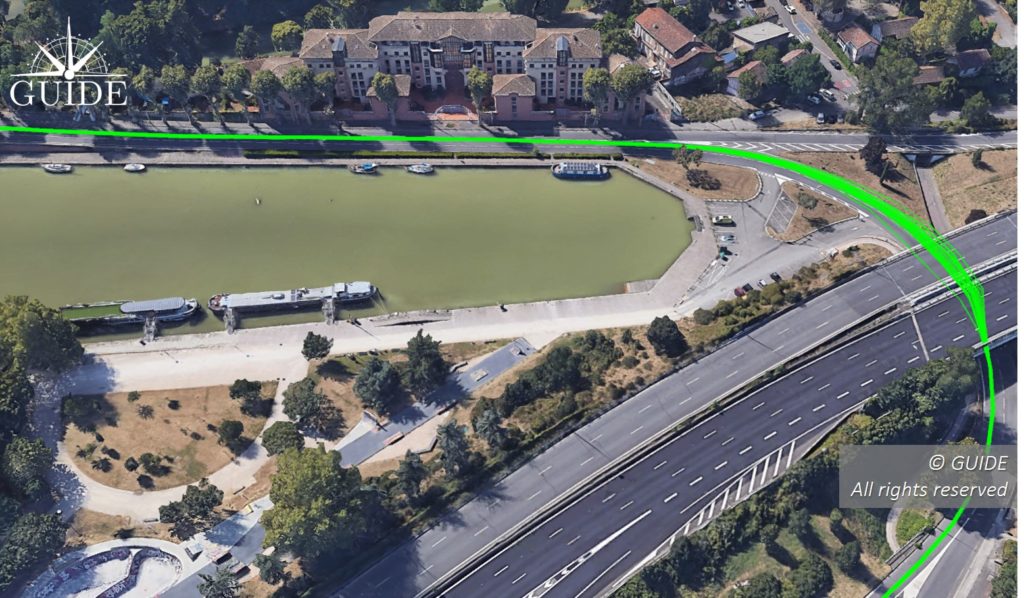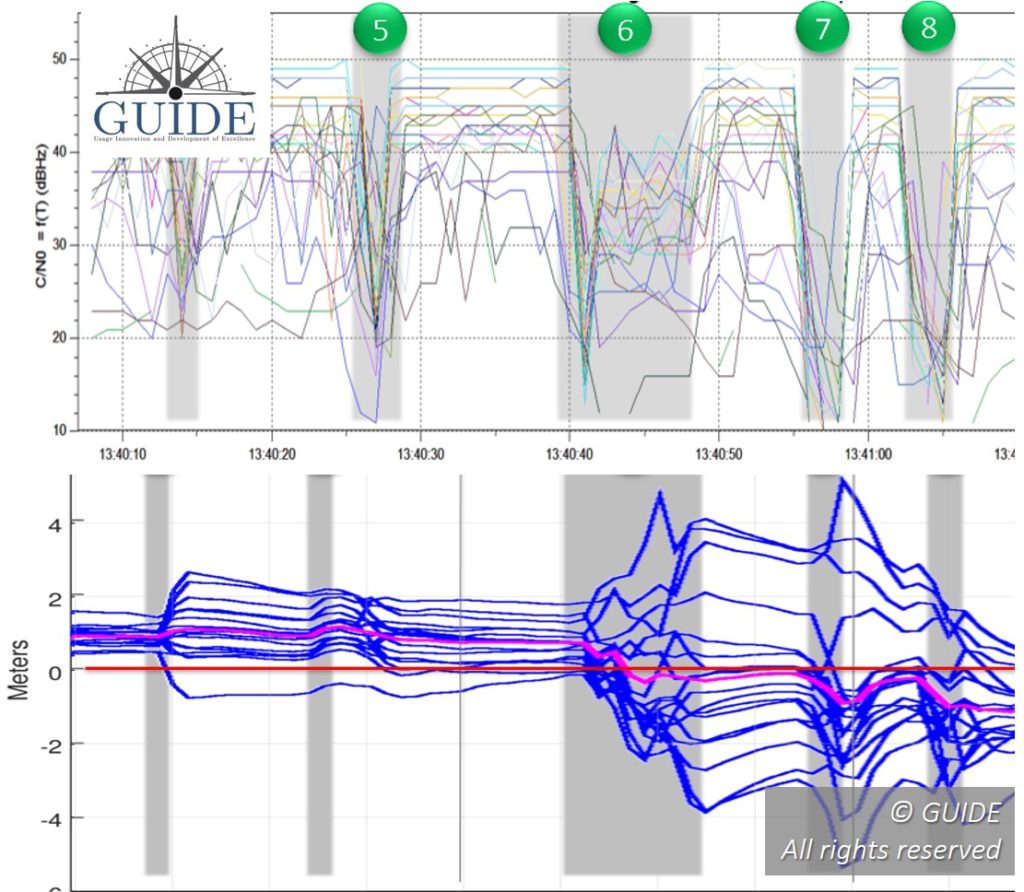GNSS Replay Tests
Testing techniques, called Record & Replay, reuse real GNSS signals
Record and Replay tests, what for?
GNSS tests “Record & Replay” (or “Record and Playback”) consist in replaying on a test bench GNSS signals and sensor measurements previously recorded during field collection campaigns. This metrology technique is capable of faithfully reproducing during replay all the propagation phenomena that altered the GNSS signal between the satellite antenna and that of the receiver.
In some cases, the replayed GNSS signals have been synthesized. They come from constellation generators.
Why do replay tests?
The analyses obtained with this test method provide more relevant results for classifying and selecting GNSS terminals and their components, such as the antenna, the receiver or the sensors to be hybridized. Similarly, it becomes easy to validate new firmwares, new algorithms, specific settings or even data services to correct or augment position measurements.
The test bench operator is thus able to launch replay sessions at his convenience. The implementation of a replay test bench is simple and quick. It is accessible to all and requires a minimum of training.
The tests can be carried out without all the risks linked with test campaigns. The operator is certain to obtain a reliable result for a characterized and chosen environment.
By reducing the time spent planning, installing and implementing instrumentation, replay sessions are inherently much more affordable.
Similarly, the instrumentation used to produce a replay test bench requires much smaller budgets than those necessary to acquire a constellation generator designed around a more complex architecture.
Summary :
- Very affordable testing technique whether for acquiring the instrumentation or for carrying out test;
- More advanced analyses for receivers, antennas, setups, algorithms, data services, hybridizations
- Quick, easy and risk-free implementation
- Assessment of applications

Figure 1 : GNSS multipath measurements using the record and replay technique

Figure 2 : GNSS diffraction measurements using the record and replay technique
What is specific to replay tests?
The replay technique offers many unique advantages. It has the advantages of both on-site testing and simulation, but without their disadvantages.
The tests are carried out with GNSS signals “representative” of the original signals from the real world in order to have realistic, reliable and above all interpretable measurements. The GNSS signals are purposely digitized to be replayed on demand and at will. The operations can be replicated in order to compare the position measurements of several devices under test.
By repeating replay sessions, “random” errors emerge from so-called “systematic” errors.
The former are caused by a disorderly propagation of GNSS signals and the latter arise from biases produced by multipath propagation phenomena.
A stochastic analysis of errors provides valuable information on the ability of a receiver to maintain “true” and “faithful” positions:
- During the “resilience” phase, the signals are altered and the position measurements will have a tendency to diverge. Maximum errors must be established.
- As for the “remanence” phase, where the receiver again benefits from good signals, the errors will still persist for a while. The speed with which the terminal reconverges is an essential performance criterion that is often underestimated.
Summary :
-
-
- Data: that are Representative & Reproducible & Repeatable
- Scenarios: Comparison reference, Validated data, Faithful and Realistic
- Measurements: Truth & Fidelity
- Errors: Resilience & Remanence
-

Figure 3 : GNSS dispersion measurements under a bridge using the record and replay technique

Figure 4 : GNSS multipath and diffraction measurements using the record and replay technique
What is a replay scenario?
The replay technique reproduces digitized GNSS signals on a test bench in both real and synthesized environments. They can be mixed with interferers generated by a second instrument, or they can be supplied already scrambled to determine the resilience of a receiver.
The scenarios consist of at least digitized GNSS signals, the reference trajectory and a contextual video. However, it is useful to include inertial and distance measurements, assistance messages (A-GNSS, RTK, PPP, …), LiDAR and in some cases measurements of receiver positions, in order to make initial comparisons.
The scenarios can cover typical environments, rural, peri-urban, urban, motorways, mountainous etc. In addition, this type of testing opens up new opportunities to study, in greater detail, the behaviour of terminals subject to well identified sources of error such as bridges, tree-lined roads, avenues bordered by tall building etc.
Conventional analysis is enriched with sets of measurements obtained from successive iterations. The results lead to sufficiently precise characterization reports enabling the selection one terminal from the rest according to the defined mission profiles. For any one terminal, it becomes possible to compare all the options any combination of equipment: antennas, Augmentations/Corrections, Hybridizations, Permanent or Contextual Settings, etc.
Summary :
-
-
- Use of a given test vehicle with the solutions under test
- Selection and characterization of test environments
- Vehicle instrumentation will provide a reference, digitization and control equipment
- Analysis of errors in position measurements
-

Figure 5 : Variation of GNSS signal-to-noise ratios ( SNR ) – Record and Replay
